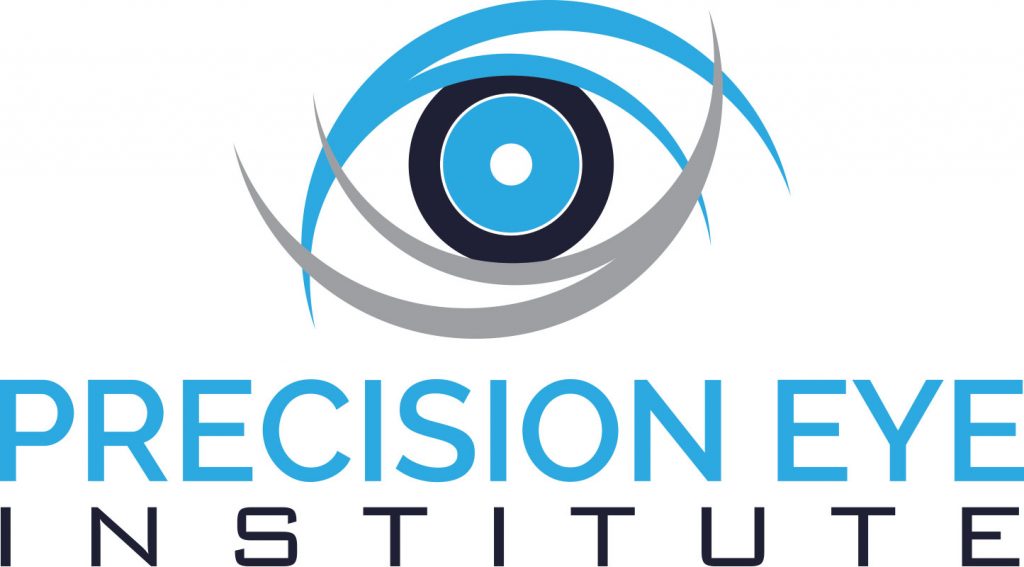Cataract Surgery
Don’t let cataracts limit your lifestyle
If you or someone you care for has been diagnosed with cataracts, you’re certainly not alone – cataracts are a natural part of the aging process, and they affect more than 20.5 million Americans over 40. You’ve likely noticed that the cloudy vision caused by cataracts can affect your ability to enjoy activities like driving, playing cards, watching TV, reading, fishing and golfing. The good news is cataract procedures are one of the most commonly performed surgeries in the U.S., with more than 3 million taking place each year. That means 3 million patients just like you are getting back to their favorite activities each year.
WHAT EXACTLY IS A CATARACT?
A cataract occurs when the natural lens in your eye becomes cloudy, making it harder for light to enter your eye. Cataracts typically occur naturally as you age, and they often cause blurry vision, glare and rings of light known as halos – sometimes at night and while driving.
WHAT EXACTLY IS CATARACT SURGERY?
Thanks to innovative medical advances, cataract surgery is a common outpatient procedure. The goal of the operation is to break the cloudy cataract-affected lens into easily removable pieces, remove those pieces and insert an artificial intraocular lens (IOL) in place of the natural lens. Traditionally, surgeons accomplished this by making tiny incisions in the eye using a surgical knife. Today, patients have a choice: There’s manual surgery, and there are also bladeless procedures assisted by advanced laser technology.

CAN I PREVENT CATARACTS OR SLOW THE PROGRESSIONS OF CATARACTS?
There’s no sure-fire way to prevent them, but making some lifestyle changes might lower your odds of getting them. Here are some easy remedies to slow cataract formation down:
- Eating Healthy – Vitamin C and Antioxidants can help.
- Avoid prolonged exposure to the sun by wearing UVA/UVB protective eyewear and wide-brimmed hats.
- Schedule Routine Exams.
- No Smoking.

BEFORE YOUR PROCEDURE
You may be instructed not to eat or drink anything 12 hours before cataract surgery. Your doctor may also advise you to temporarily stop taking any medication that could increase your risk of bleeding during the procedure. Let your doctor know if you take any medications for prostate problems, as some of these drugs can interfere with cataract surgery.
Antibiotic eyedrops may be prescribed for use one or two days before the surgery.
Normally you can go home on the same day as your surgery, but you won’t be able to drive, so arrange for a ride home. Also arrange for help around home, if necessary, because your doctor may limit activities, such as bending and lifting, for about a week after your surgery.
A week or so before your surgery, your doctor performs a painless ultrasound test to measure the size and shape of your eye. This helps determine the right type of lens implant (intraocular lens, or IOL).
Nearly everyone who has cataract surgery will be given IOLs. These lenses improve your vision by focusing light on the back of your eye. You won’t be able to see or feel the lens. It requires no care and becomes a permanent part of your eye.
A variety of IOLs with different features are available. Before surgery, you and your eye doctor will discuss which type of IOL might work best for you and your lifestyle. Cost may also be a factor, as insurance companies may not pay for all types of lenses.
IOLs are made of plastic, acrylic or silicone. Some IOLs block ultraviolet light. Some IOLs are rigid plastic and implanted through an incision that requires several stitches (sutures) to close.
However, many IOLs are flexible, allowing a smaller incision that requires few or no stitches. The surgeon folds this type of lens and inserts it into the empty capsule where the natural lens used to be. Once inside the eye, the folded IOL unfolds, filling the empty capsule.
Some of the types of lenses available include:
- Fixed-focus monofocal. This type of lens has a single focus strength for distance vision. Reading will generally require the use of reading glasses.
- Accommodating-focus monofocal. Although these lenses only have a single focusing strength, they can respond to eye muscle movements and shift focus to near or distant objects.
- Multifocal. These lenses are similar to glasses with bifocal or progressive lenses. Different areas of the lens have different focusing strengths, allowing for near, medium and far vision.
- Astigmatism correction (toric). If you have a significant astigmatism, a toric lens can help correct your vision.
Discuss the benefits and risks of the different types of IOLs with your eye surgeon to determine what’s best for you.
DURING YOUR PROCEDURE
A week or so before your surgery, your doctor performs a painless ultrasound test to measure the size and shape of your eye. This helps determine the right type of lens implant (intraocular lens, or IOL).
Nearly everyone who has cataract surgery will be given IOLs. These lenses improve your vision by focusing light on the back of your eye. You won’t be able to see or feel the lens. It requires no care and becomes a permanent part of your eye.
A variety of IOLs with different features are available. Before surgery, you and your eye doctor will discuss which type of IOL might work best for you and your lifestyle. Cost may also be a factor, as insurance companies may not pay for all types of lenses.
IOLs are made of plastic, acrylic or silicone. Some IOLs block ultraviolet light. Some IOLs are rigid plastic and implanted through an incision that requires several stitches (sutures) to close.
However, many IOLs are flexible, allowing a smaller incision that requires few or no stitches. The surgeon folds this type of lens and inserts it into the empty capsule where the natural lens used to be. Once inside the eye, the folded IOL unfolds, filling the empty capsule.
Some of the types of lenses available include:
- Fixed-focus monofocal. This type of lens has a single focus strength for distance vision. Reading will generally require the use of reading glasses.
- Accommodating-focus monofocal. Although these lenses only have a single focusing strength, they can respond to eye muscle movements and shift focus to near or distant objects.
- Multifocal. These lenses are similar to glasses with bifocal or progressive lenses. Different areas of the lens have different focusing strengths, allowing for near, medium and far vision.
- Astigmatism correction (toric). If you have a significant astigmatism, a toric lens can help correct your vision.
Discuss the benefits and risks of the different types of IOLs with your eye surgeon to determine what’s best for you.
AFTER YOUR PROCEDURE
After cataract surgery, expect your vision to begin improving within a few days. Your vision may be blurry at first as your eye heals and adjusts.
Colors may seem brighter after your surgery because you are looking through a new, clear lens. A cataract is usually yellow- or brown-tinted before surgery, muting the look of colors.
You’ll usually see your eye doctor a day or two after your surgery, the following week, and then again after about a month to monitor healing.
It’s normal to feel itching and mild discomfort for a couple of days after surgery. Avoid rubbing or pushing on your eye.
Your doctor may ask you to wear an eye patch or protective shield the day of surgery. Your doctor may also recommend wearing the eye patch for a few days after your surgery and the protective shield when you sleep during the recovery period.
Your doctor may prescribe eyedrops or other medication to prevent infection, reduce inflammation and control eye pressure. Sometimes, these medications can be injected into the eye at the time of surgery.
After a couple of days, most of the discomfort should disappear. Often, complete healing occurs within eight weeks.
Contact your doctor immediately if you experience any of the following:
- Vision loss
- Pain that persists despite the use of over-the-counter pain medications
- Increased eye redness
- Eyelid swelling
- Light flashes or multiple new spots (floaters) in front of your eye
Most people need glasses, at least some of the time, after cataract surgery. Your doctor will let you know when your eyes have healed enough for you to get a final prescription for eyeglasses. This is usually between one and three months after surgery.
If you have cataracts in both eyes, your doctor usually schedules the second surgery after the first eye has healed.
RESULTS
Cataract surgery successfully restores vision in the majority of people who have the procedure.
People who’ve had cataract surgery may develop a secondary cataract. The medical term for this common complication is known as posterior capsule opacification (PCO). This happens when the back of the lens capsule — the part of the lens that wasn’t removed during surgery and that now supports the lens implant — becomes cloudy and impairs your vision.
PCO is treated with a painless, five-minute outpatient procedure called yttrium-aluminum-garnet (YAG) laser capsulotomy. In YAG laser capsulotomy, a laser beam is used to make a small opening in the clouded capsule to provide a clear path through which the light can pass.
After the procedure, you usually stay in the doctor’s office for about an hour to make sure your eye pressure doesn’t rise. Other complications are rare but can include increased eye pressure and retinal detachment.
IT’S YOUR TREATMENT, AND YOUR CHOICE
The LenSx Laser is a great option for many patients considering Laser Cataract Surgery, but it may not be the right fit for everyone. Talk to your eye care professional about what type of treatment is right before you make a decision. When it comes time for your eye care professional to recommend treatment and replacement lens options, he or she will consider a variety of factors, as well as your lifestyle and hobbies.
Patient Testimonial

Claire
Edgewater
Clair is an avid outdoorswomen who loves to be on the water. Her active lifestyle keeps her on the move quite a bit and she is not about to let anything slow her down.
Fly fishing is one of my passions. I travel all over our beautiful country to fish tail waters in awesome rivers for fresh water trout. I noticed this past spring that it was very difficult to tie a fly on my hook whether standing in a boat or wading waist deep. I had to pull out my “cheaters” even though I was wearing perfectly fine contacts. After consulting with Dr. Krajnyk at The Precision Eye Institute, it was discovered that I needed cataract surgery in both eyes. It was a perfect opportunity to have multi focal lenses put in so that I wouldn’t have to ever worry about contacts or glasses again! What a great decision! My eyes are perfect and now I can go back and tie my flies on the smallest hooks with no problem! The staff at The Precision Eye Institute are kind and professional which were key to making my surgeries go perfectly!
